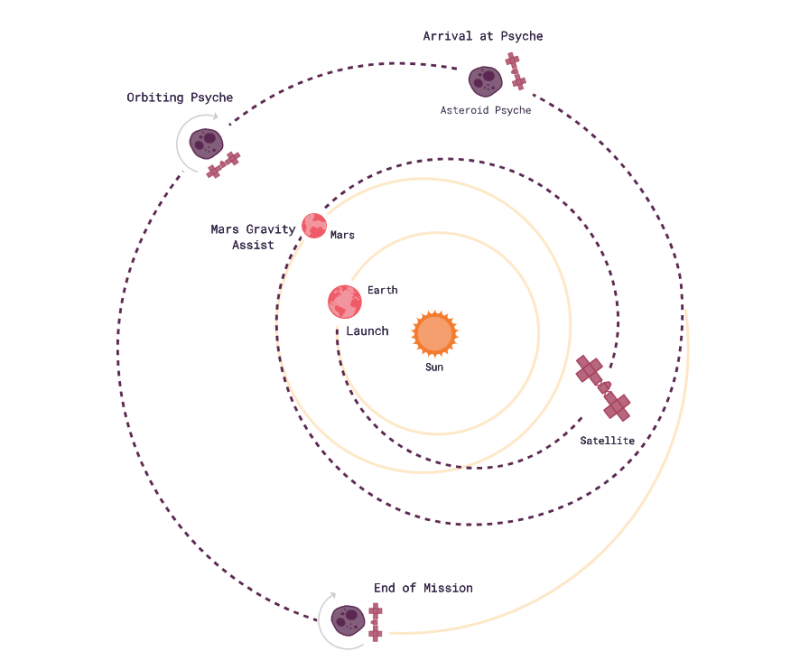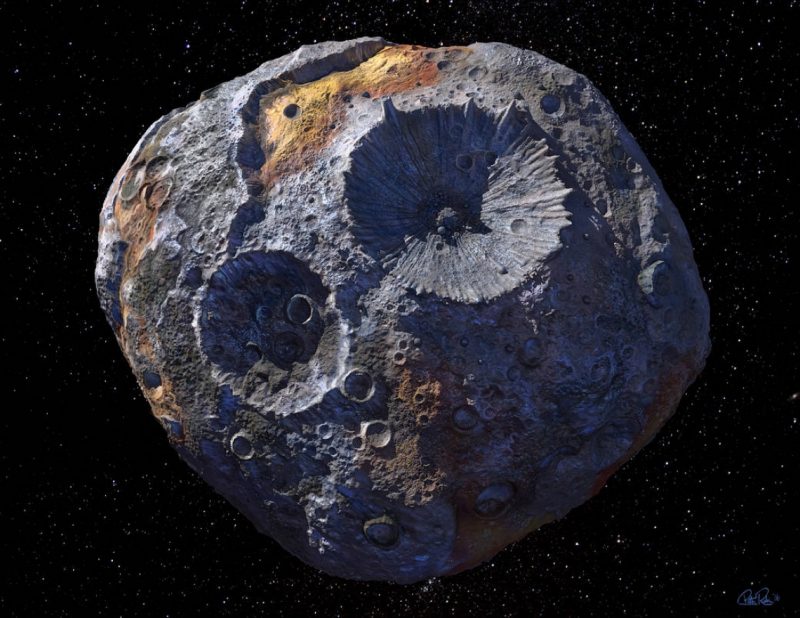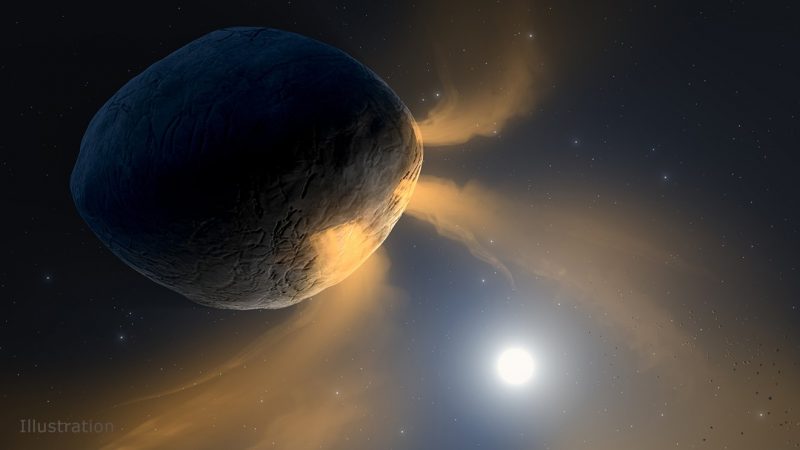The mission to metal asteroid 16 Psyche is set to launch on October 12, 2022.
16 Psyche was one of the first asteroids to be discovered, in the year 1852. It isn’t made of rock, and it isn’t made of ice. Instead, it’s a rare metal asteroid, orbiting our sun in the solar system’s asteroid belt between the 4th planet Mars and 5th planet Jupiter. We haven’t yet explored any world quite like it. And so scientists at Arizona State University – which is leading the mission – are thrilled about the launch of the space mission to 16 Psyche. It had been set to go up on October 5, 2023. But now that launch has been delayed until October 12.
The craft is due to arrive at the asteroid in 2029.
Although not everyone agrees, some scientists believe this asteroid is the remains of an iron-rich core from a failed planet. If so – and if asteroid mining techniques could be developed – Psyche’s metallic resources might be worth some $10,000 quadrillion (that’s 15 more zeroes).
But that’s the not the only reason scientists are interested in 16 Psyche!
Psyche mission goals
The current mission isn’t about mining. It’s about exploring. After it arrives in 2029, the Psyche spacecraft will orbit the asteroid for three years. During that time, scientists hope to learn more about the origins of the asteroid and whether it truly was the core of a failed planet.
They also want to explore Psyche’s topography (the features on its surface) and determine the age of its surface. They say it’ll give them insight into the interiors of all the terrestrial planets, including Earth.
But the big question may be … is Psyche a true metal asteroid, as once believed? Or is it closer to what scientists call a “rubble pile?”
There’s no way (at present) to put a true price on space objects such as asteroids. But many have tried to estimate the worth of asteroid Psyche, with its metal-rich composition. One estimate suggests a massive, metal-rich object would be worth $10,000 quadrillion, more than the entire economy of Earth.
If Psyche isn’t as dense as once believed, this estimate will go down.
Still, either way, Psyche will be worth a lot! And, to scientists, it’ll remain … priceless.

Mining the asteroid?
Now, about that $10,000 quadrillion worth of metals in Psyche … again, the current mission isn’t about mining asteroid Psyche. Instead, according to NASA, Psyche is a science mission to learn more about asteroids and the formation of terrestrial planets.
No one on Earth is yet at a stage where we can successfully go to an asteroid and mine it. But private companies are working on how to mine asteroids. Learn more about the asteroid mining process in the video below.
More about Psyche
Italian astronomer Annibale de Gasparis discovered Psyche in 1852. It was the 16th asteroid discovered. Hence its designation 16 Psyche. De Gasparis named the asteroid after the Greek goddess of the soul.
Psyche measures approximately 140 miles (225 km) in diameter, with a surface area of about 64,000 square miles (165,800 km²). Current estimates of its density are 3,400 to 4,100 kg/m³. This density measurement would mean the asteroid is 30 to 60% metal by volume.
Scientists speculate that Psyche was once a young planetesimal, a solid object drifting with other debris in orbit around our newly forming sun. They think it’s possible that Psyche might ultimately have formed a planet, and that its composition had already separated out into an iron core and a rocky mantle. But the early solar system was a violent place. Debris was flying! And a collision might have ripped away Psyche’s rocky exterior.
So a planet never formed. Psyche become a lowly asteroid instead, orbiting with thousands of other asteroids around our sun. But if in fact Psyche was once on its way to becoming a planet, scientists might now have a first-row seat on viewing a planet, from the inside out.

The mission’s instruments
The Psyche mission will carry three primary instruments: a multispectral imager, a gamma ray and neutron spectrometer and a magnetometer. These instruments will be investigating the first metal space object that humankind has ever visited.
The imagers will take pictures while the spectrometer will measure the elemental composition of Psyche. The magnetometer will check for any remaining magnetic field, which will be an indication of whether or not Psyche was once a planetary core.
Psyche will also have an X-band radio telecommunications system that will help map the asteroid’s gravity and structure. The system is also used in sending commands to the spacecraft and receiving data back on Earth.

Bottom line: The Psyche mission will launch on October 12, 2023, on a mission to explore the metal-rich asteroid Psyche.
Via NASA
Via ASU
The Psyche launch and its journey to a metal world: What to expect




